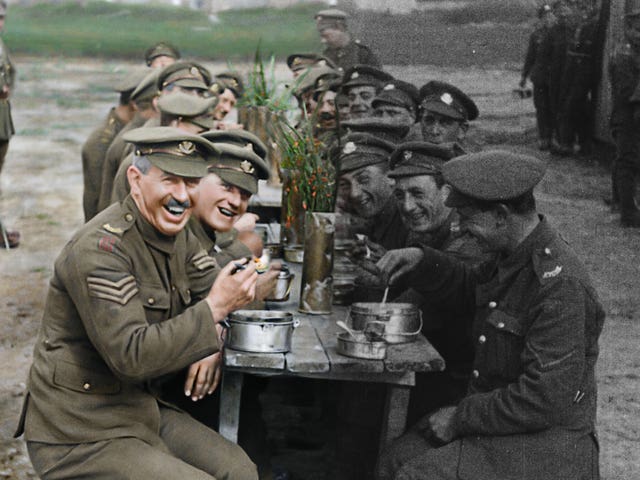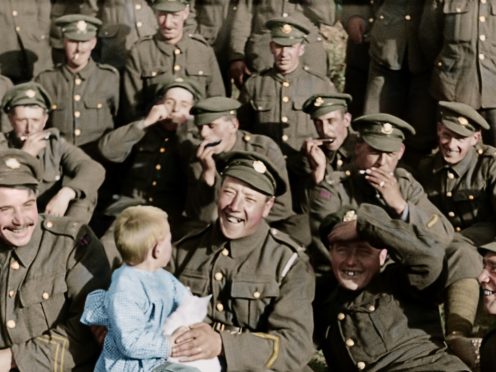A First World War film which brought old footage to life in colour has been praised by viewers as extraordinary.
Director Sir Peter Jackson’s documentary told the stories of ordinary soldiers from contemporary footage and their own words, turning the black and white images into a colour film.
Sir Peter, whose grandfather fought in the war, used the voices of the veterans combined with archive footage to show the reality of war on the front line.

The footage has been colourised, converted to 3D and transformed with modern production techniques to present “never before seen detail”, the BBC said.
The film was broadcast on BBC Two on Sunday night and became a trending topic on Twitter.
Watching #TheyShallNotGrowOld on BBC2. The most incredible footage. Hats off to @ReaPeterJackson. The testimonies of soldiers and tales of life in the trenches is utterly gripping. #lestweforget18 #LestWeForget
— Darren Altman (@DarrenAltman) November 11, 2018
One user described it as “completely overwhelming”, while another said it was “extraordinary”.
#TheyShallNotGrowOld is quite extraordinary. I don't know what I feel or think, it's just completely overwhelming…
— Jenny Willott (@JennyWillott) November 11, 2018
#TheyShallNotGrowOld an extraordinary insight into WW1 through the use of colour and sound. A fitting tribute to those that paid the ultimate sacrifice.
— Nial Foster (@NialFoster) November 11, 2018
Another said watching the programme “really brought home what these brave men went through on the frontline”.
Peter Jackson's documentary #TheyShallNotGrowOld on BBC2 is quite remarkable. For me, the restoration and colourisation of the film has really brought home what these brave men went through on the frontline. #Remembrance2018
— James Dwan (@JamesDwan) November 11, 2018
The film was described as “utterly gripping”, and “essential viewing in schools for decades”, while other viewers said it was “simply unbelievable” and “absolutely jaw-dropping”.
Speaking before the film was screened at the BFI London Film Festival in October, Sir Peter said: “This is not a story of the First World War, it is not a historical story, it may not even be entirely accurate, but it’s the memories of the men who fought – they’re just giving their impressions of what it was like to be a soldier.
“The amazing thing is after listening to 600 hours of interviews and probably 250 different men, it’s amazing how common their story is.”
So moving. So horrifying. So pointless. What an incredible piece of work by Peter Jackson. This is going to be essential viewing in schools for decades. #TheyShallNotGrowOld
— Simon Palmer 🎧📻🇬🇧🇮🇪 (@SimonJohnPalmer) November 11, 2018
This footage transformed into colour is simply unbelievable. The horrors of WW1 trench life are beyond imagination. #TheyShallNotGrowOld
— adam cannon (@adam_cannon) November 11, 2018
That transition into colour was incredible enough but add to that the improved frame rate and voice dubbing and it was absolutely jaw-dropping. #TheyShallNotGrowOld
— Kieran Doody (@kierandoody) November 11, 2018
